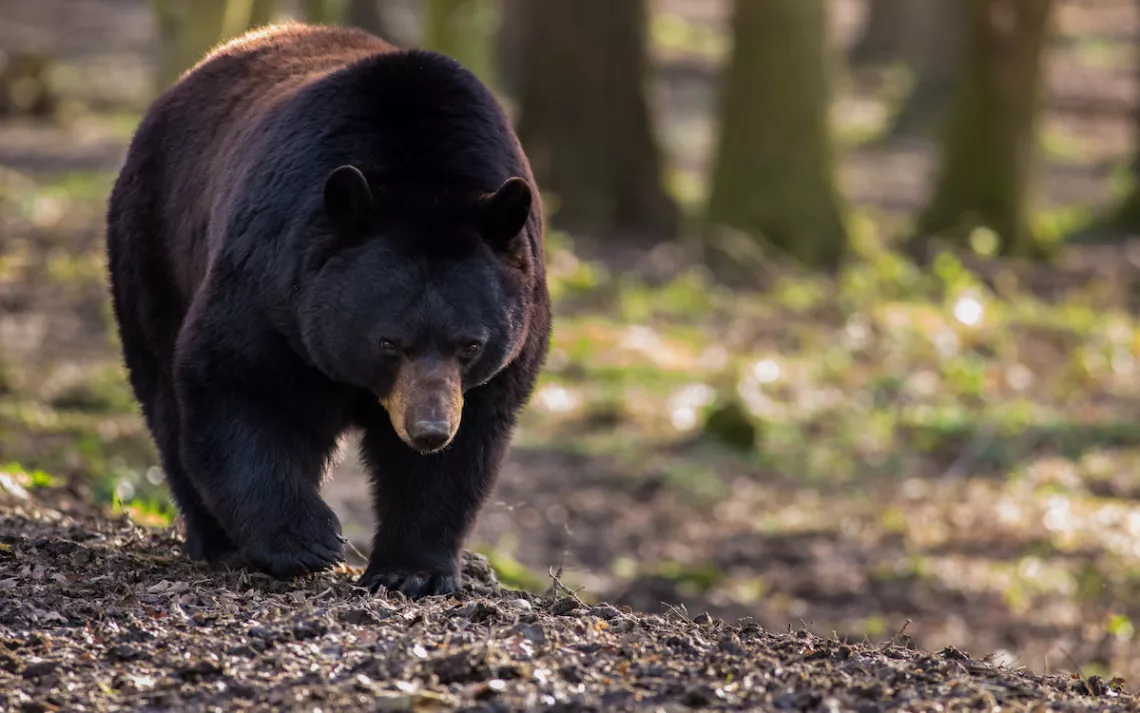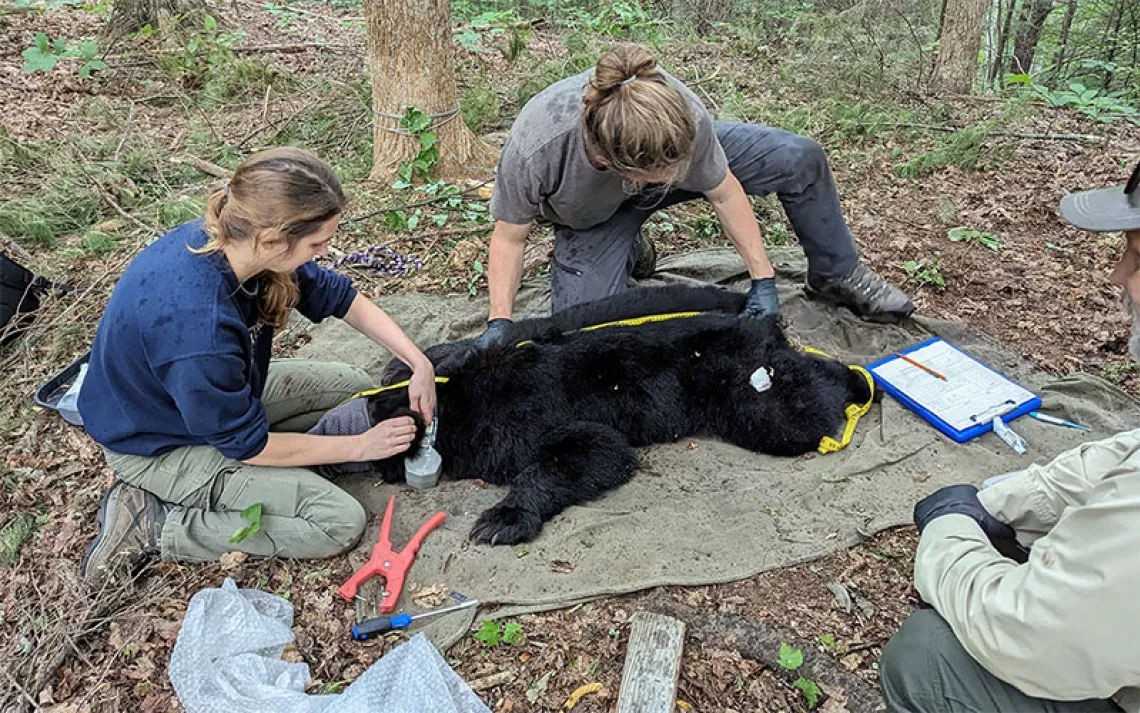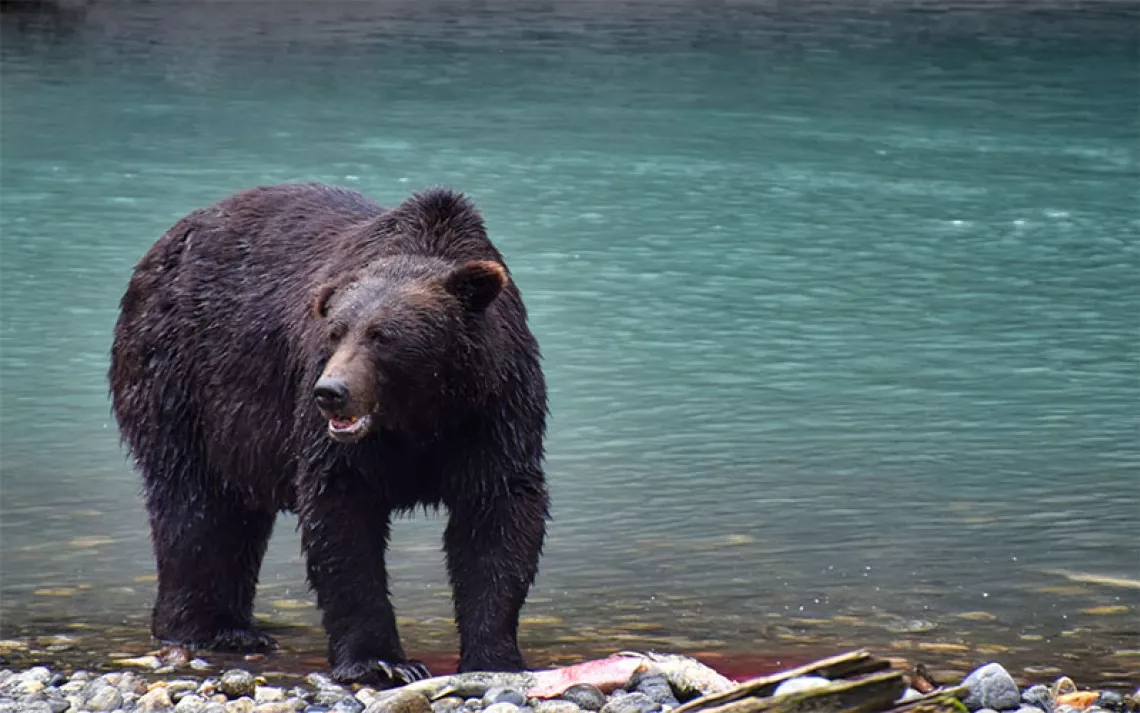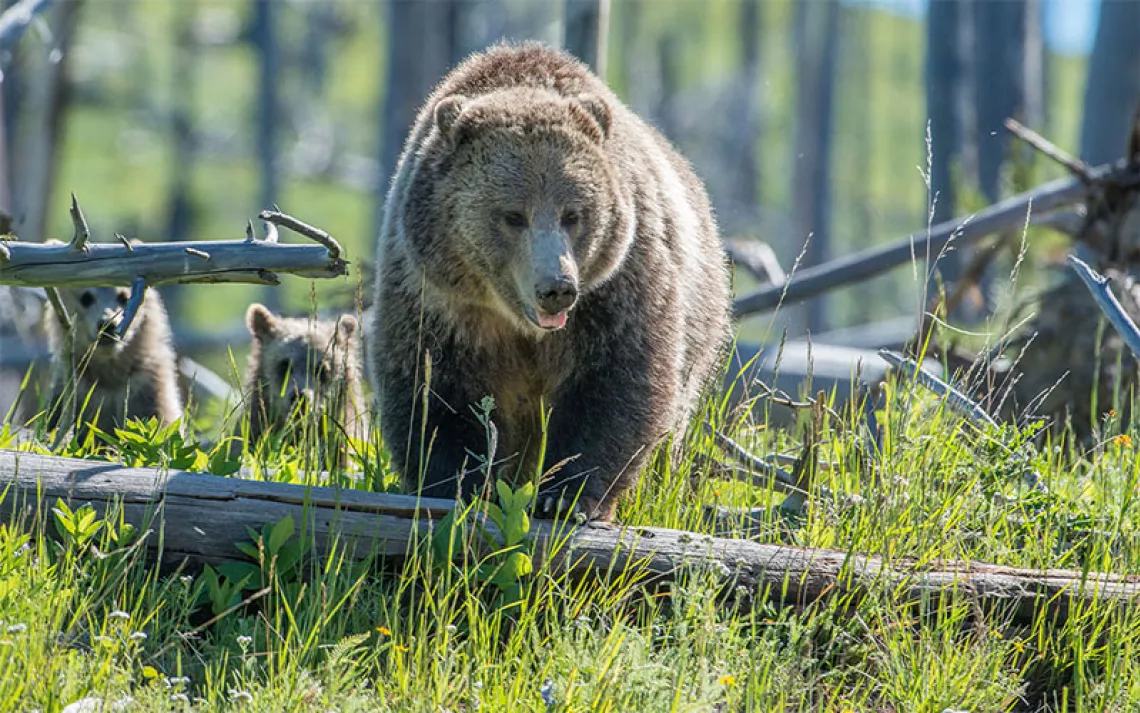Better Living With Bears
Boulder, Colorado, is pioneering ways of coexisting with the city’s wild neighbors

Photo by gui00878/iStock
Eight years ago, when Brenda Lee moved to Boulder, Colorado, her neighbors offered some advice. If ever she encountered a black bear—a regular occurrence in a city nestled beneath the forested, wildlife-rich slopes of the Flatiron mountains—and felt threatened, she should not call the city or other wildlife agencies.
Lee learned that Colorado Parks and Wildlife, the state agency that handles reports of bear conflict, has a two-strikes policy. The first time a bear causes a problem, the agency relocates the animal; next time the bear is shot and killed. And sometimes even the ostensibly humane alternative of relocation could be a death sentence for a bear suddenly transplanted into an unfamiliar place. (Officials at Colorado Parks and Wildlife object to the phrase “two-strikes policy,” but there’s no arguing with the fact that a bear that gets into conflict with humans more than once is at risk of being, in the agency’s terminology, “destroyed.”)
As someone who loves animals, Lee wanted to protect the bears. “I believe we have an obligation to reduce suffering wherever we can,” she says. Keeping quiet, though, was clearly not a long-term strategy. Some people might be happy when a mother bear visited their apple trees, but it was easy to foresee what would happen if that bear wandered into a less-welcoming resident’s backyard.
When Lee approached Colorado Parks and Wildlife officials, they explained their rationale. They had no desire to kill bears—but the public demanded safety. Never mind that black bears’ reputation for dangerousness is grossly exaggerated, that orders of magnitude more Americans die from spider bites and bee stings than from bear attacks. They’re big animals whose presence understandably makes many people nervous. If Boulder residents wanted fewer dead bears, they needed to confront why so many bears got their first strike. And that, in a word, was trash.
For anyone who pays attention to conflicts with bears—or with wildlife in general—this will come as no revelation. Trash, which is another word for free, convenient food for animals, is a long-standing wildlife management problem. That the problem is well-known doesn’t make it any easier to solve, though, nor any less urgent.
I learned about Lee—who in 2014 founded the Boulder Bear Coalition, a volunteer-run nonprofit devoted to reducing bear conflicts—while researching the ethical implications of a scientific insight into bear intelligence. Bears are extraordinarily cognitive, on a par with great apes; and while intelligence isn’t the only reason to treat other species ethically, it’s certainly a good one. In the case of chimpanzees, intelligence is among the reasons why biomedical experiments on them are so strictly regulated.
When it comes to the ethical treatment of bears, recreational hunting tends to get most of the attention. Yet the challenges of conflict and coexistence are arguably as important, if not more so. Coexistence is an issue everywhere bear homes abut our own, which on a fast-urbanizing continent is a great many places. Few communities have handled those challenges better than Boulder.
Last October, I paid a visit to Lee, who took me on an early-morning trip through Boulder on trash-collection day. We concentrated on the alleys of the western part of Boulder, a neighborhood just a few minutes’ walk from the Flatirons where bear sightings were once common. Between 2012 and 2014, Lee made hundreds of predawn drives like this, photographing overflowing garbage cans beside mounds of bear poop. It was slow, unglamorous work, but it eventually helped convince Boulder’s city council to pass an ordinance in 2014 requiring bear-proof trash bins in the city’s western half.
The passage of that ordinance was possible because Lee also pushed the local trash company to make new, bear-proof containers available without raising residents’ collection fees. That history underscores the logistical nuances of coexistence. It’s not enough to make a rule; the infrastructure needs to be in place to make the rule work. And then people need to actually close their garbage cans. An overstuffed bear-proof container with an open lid is no help at all.
“No policy is good without good enforcement,” Lee says as we drive through town. Even today, the Boulder Bear Coalition volunteers continue to patrol the streets on trash-pickup mornings, looking for open containers and reporting them. “It used to be that I would report hundreds at this time of year,” Lee says.
But on this morning, there are only a few open bins. Lee closes several, and in one particularly egregious instance pulls out her phone, takes a photograph, and uploads it to the city’s code-enforcement app. If people want to file a report but are afraid to use their own name, Lee explains that they can use the Boulder Bear Coalition’s contact information instead. That might sound like a simple thing, but it can save a bear’s life.
Lee and Melanie Hill—architect of the Bears & People Project, which grew out of her graduate studies at the University of Colorado— then drive me into the mountains above Boulder, where along a flood-denuded streambed they’ve helped the city’s Open Space and Mountain Parks department plant several hundred shrubs. These include chokecherries and wild plums and wax currants—the sort of food that bears love. “Why are they coming into town? "It’s food,” says Lee. “But if they had more food in the mountains. . .”
Some wildlife biologists have actually suggested that it’s possible to divert bears from populated areas by setting up temporary feeding sites during seasons when natural food is scarce. While the evidence for that is limited (if encouraging), it’s also a controversial idea. Native shrubs is not. The plantings outside Boulder, started in 2017, are still in proof-of-principle stage, but perhaps they can help safely sate bears before they reach town.
When bears do appear inside Boulder, volunteer “bear-sitters” trained by Colorado Parks and Wildlife and the Open Space and Mountain Parks department are there to greet them. “We’re literally called out to babysit,” Hill explains. They keep an eye on the bears and passersby who stray too close, herding the bears out of town and giving the humans impromptu lessons on bear behavior and the importance of securing trash.
“I always had a passion to protect wildlife. I never thought I’d be working more with people,” Hill says. “It truly does take a village. We all have to be on board with this. It can’t just be one person, or a few here and there.”
The next day, Hill takes me out with Boulder Fruit Rescue, an organization founded in 2014 by the Boulder Bear Coalition and other community groups to collect unharvested fruit—another bear attractant—from backyard trees. The best fruits go to a homeless shelter, some to the volunteers, and the rest to a nearby animal sanctuary. On this night we gather pears. A mound of fresh bear scat rests beneath the trees.
Are all these efforts saving bear lives? For now, the mortality figures are too limited to draw cause-and-effect conclusions: Four bears have been killed in Boulder in the four years since the trash ordinance’s passage, compared to six bears killed in the four years before that. But Val Matheson, the city’s urban wildlife conservation coordinator, calls the data “encouraging.” There’s no doubt, she says, that “there is significantly less trash strewn by bears now.”
Kristin Cannon, the district wildlife manager for Colorado Parks and Wildlife, agrees. “The kind of calls we’re getting in town, the kind of conflicts we’re getting, have changed in the past two years,” she says. “Anecdotally we’ve seen fewer bears in town, and bears that come don’t stay as long.”
Could Boulder’s efforts be a blueprint for other communities? The city, it should be noted, is particularly wildlife-friendly. It’s famous for attracting hippies and nature-loving people, and such wildlife coexistence attitudes are crucial for success. “I think most people in this area don’t want their presence to be the reason bears are killed,” Matheson says. “If your community feels like wildlife is here for your use and at your disposal, it’s going to be hard.”
Still, Boulder is hardly alone in having wildlife-friendly residents. The British Columbia-based Get Bear Smart Society has worked with communities from Whistler, B.C. to Juneau, Alaska and Wintergreen, Virginia to make them bear-safe. In many places—and not just environmentalist hotbeds—people, when they’re not confronting bears over a garbage can or a bird feeder, tend to appreciate these animals.
Lee says that she used to feel frustrated, even ashamed, by humanity’s nature-destroying habits. Helping bears allowed her to channel that anger into something productive. “It’s an amazing time to engage people and to realize that there’s simple things you can do to help,” she says. “It doesn’t take a lot. Just focus and belief.”
 The Magazine of The Sierra Club
The Magazine of The Sierra Club



